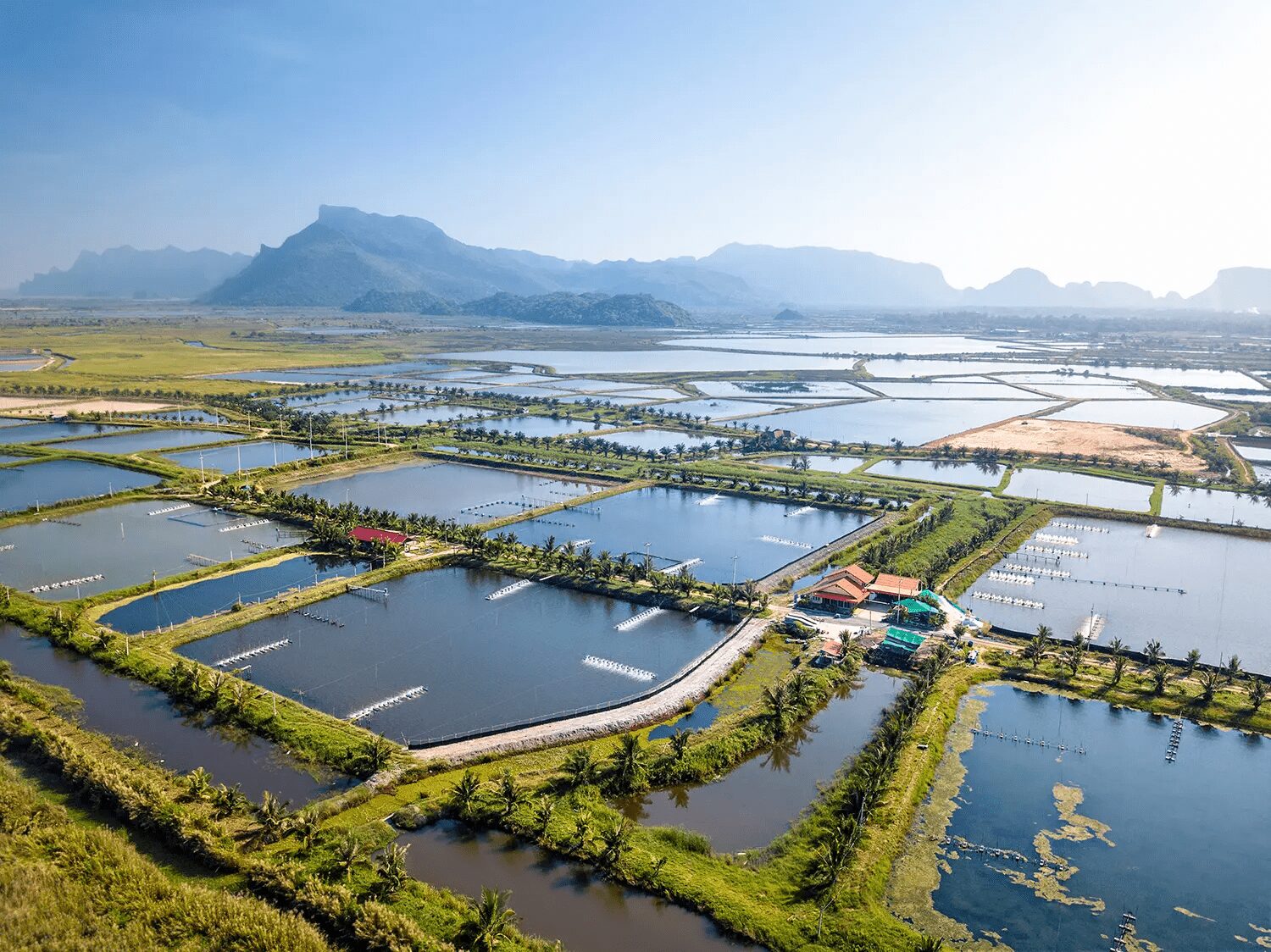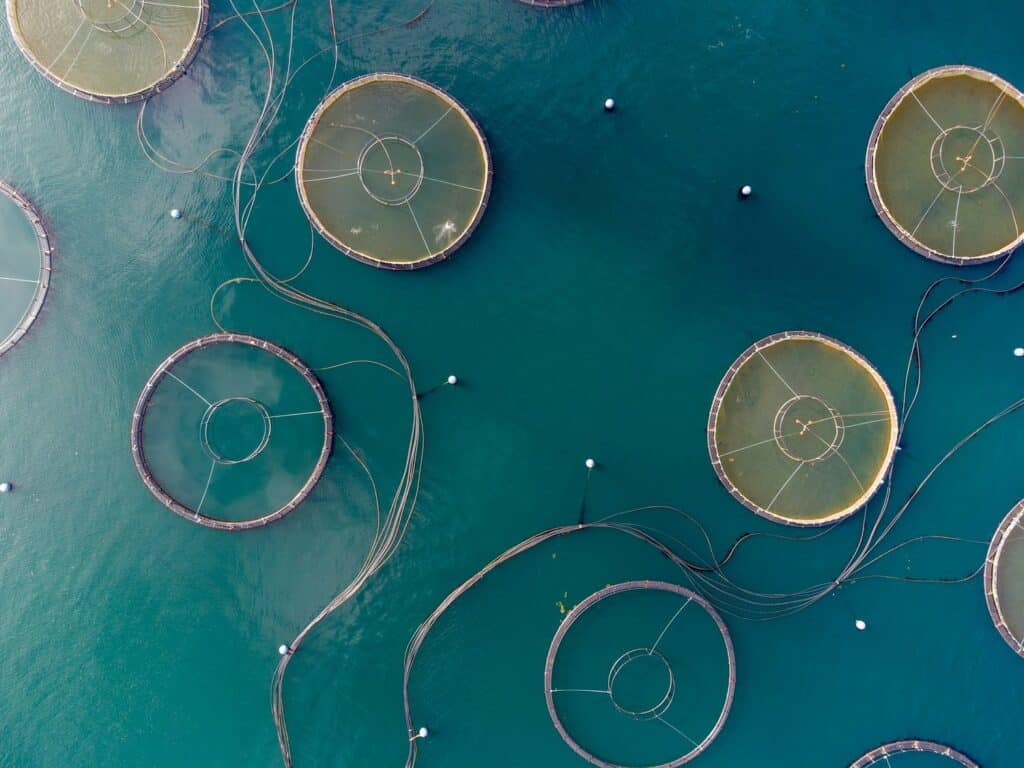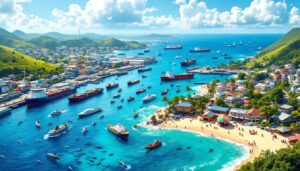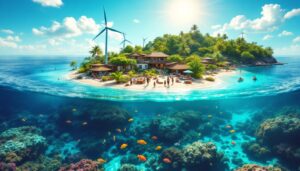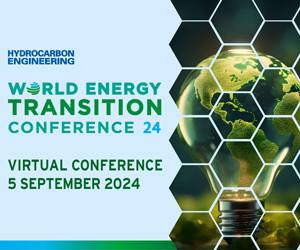In the midst of an ecological crisis, mariculture emerges as a potential response to the challenges facing our planet. With the relentless growth of the global population and the rising demand for aquatic proteins, this practice of sea farming is becoming a key player in the fragile balance of our marine ecosystems. However, questions remain: is this approach truly sustainable? What are its impacts on the oceans and the communities that depend on them? By analyzing the current state and opportunities of mariculture, this article invites you to dive into the fascinating world of aquatic farming. Embark on a journey to the heart of the Blue Ocean, encountering challenges and solutions for a serene future.
Table of Contents
ToggleThe foundations of mariculture: an exploration from the past to the future
For centuries, coastal societies have relied on the sea for their livelihoods and economic development. The ancient art of aquaculture, although different from mariculture, laid the groundwork for controlled development of fishery resources. At the heart of this revolution, various water management techniques and species selection have emerged to optimize yield while preserving marine biodiversity.
Today, mariculture is anchored as a viable solution to meet growing food needs. According to a FAO report, marine aquaculture could meet a significant portion of future seafood demand. It offers a sustainable alternative to conventional fishing practices that sometimes support overfishing and damage marine ecosystems.
The socio-economic and environmental benefits
Mariculture is not just an economic opportunity; it is also a driver of local community revitalization. By generating jobs and stimulating regional economies, it plays a key role in sustainable development. Furthermore, by relying on ethical resource management, it promotes a model of food production that respects the oceans.
However, mariculture is not limited to mere economic support. Its contribution to the preservation of ecosystems is also noteworthy. Through sustainable techniques, such as seaweed and mollusk farming, it contributes to water purification and CO2 reduction. A prime example is the SeaGreen initiative, where golden seaweed is used to filter polluted waters.
- Increase in marine protein production.
- Reduction of pressure on wild fish stocks.
- Contribution to global food security.
- Revitalization of local economies through job creation.
| Benefit | Impact |
|---|---|
| Economic | Job creation, regional development |
| Environmental | Preservation of marine ecosystems, CO2 reduction |
| Social | Food security, support for local communities |
With these multiple positive facets, responsible mariculture appears as an unwavering ally for a sustainable marine future. However, to truly move towards a Serene Atlantic, our current practices still require various improvements and regulations.
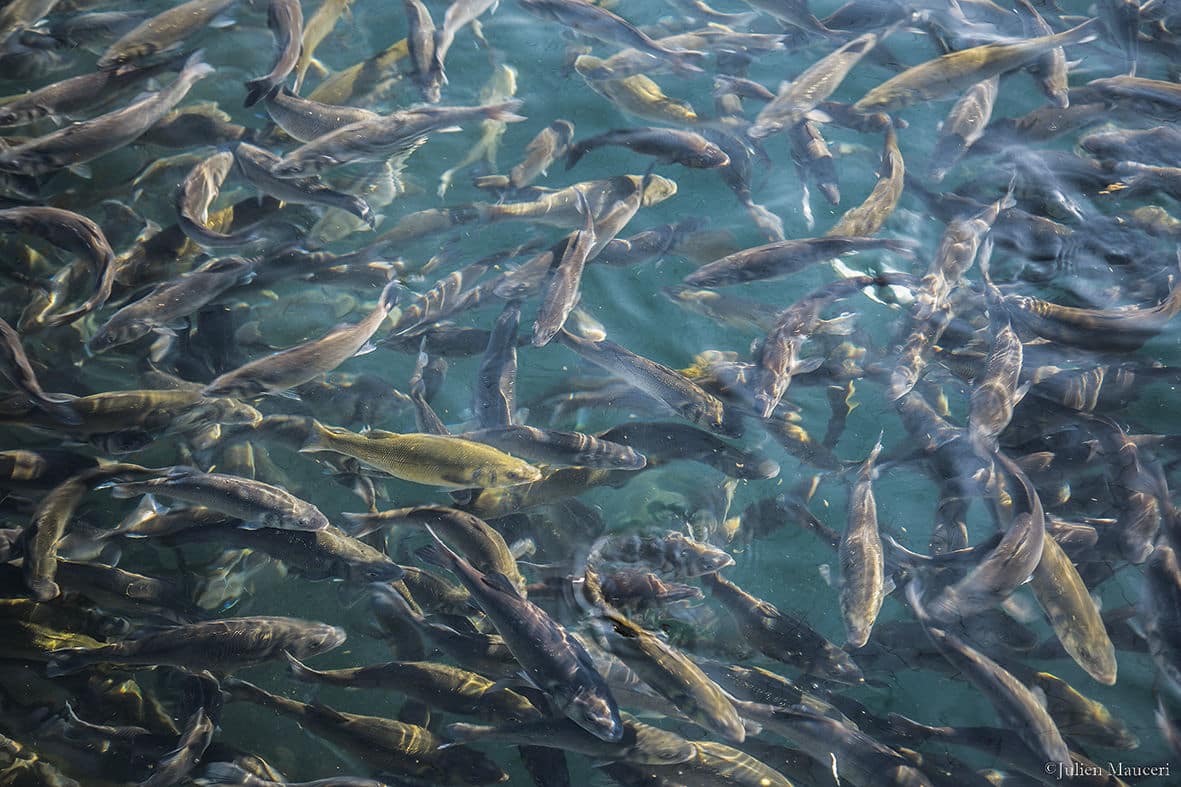
Technological innovations in mariculture: revolution and sustainability
One of the strengths of modern mariculture lies in the numerous technological innovations that accompany it. Whether through the implementation of automated systems or the creation of ecological infrastructures, technology is transforming mariculture into a more efficient and sustainable version.
For example, the use of robotics and artificial intelligence has significantly improved resource management. Sensors now enable real-time monitoring of water quality and the health of farmed species. These advances not only reduce the environmental impact but also increase productivity.
Recirculation systems and waste management
Recirculation systems offer an innovative approach to closed-environment farming, effectively utilizing and recycling water. This mechanism allows for impressive water savings while managing waste more effectively. Thus, pollution of neighboring ecosystems is significantly reduced.
Regarding the ecological aspect, devices such as biofilters used in these systems further limit environmental impact. Thanks to these purification techniques, waste is converted into reusable nutrients, thereby optimizing the production cycle.
- Use of cutting-edge technologies to improve efficiency.
- Installation of filtration systems for higher quality water.
- Resource optimization through waste management.
| Technology | Ecological Impact |
|---|---|
| Robotics and AI | Energy optimization, reduced waste |
| Recirculation systems | Water recovery, waste management |
| Biofilters | Water purification, nutrient recycling |
Within this technological revolution, promising initiatives are emerging, such as the Blue Ocean project. This is a program dedicated to the integration of technology for sustainable mariculture.
Challenges and perspectives of mariculture: ecological and economic issues
Although mariculture presents undeniable benefits, it also faces several major challenges, primarily related to ecological and economic aspects. In terms of sustainability, it is crucial to ensure that this practice does not become a threat to marine ecosystems.
One major problem is marine pollution. Organic waste, if not properly treated, can lead to eutrophication of waters, causing imbalances in fauna and flora. This requires heightened vigilance when operating mariculture facilities.
Resource management and environmental impacts
Resource management in mariculture requires a cautious approach. Overconsumption of natural elements, such as water or energy, can exacerbate existing environmental problems. Additionally, the introduction of non-native species could disrupt natural balances.
Strategies are emerging to overcome these challenges. One of them involves limiting mariculture installations to specific areas to control and minimize environmental impacts. The other strategy relies on exploiting responsible mariculture by adopting production methods that are more respectful of nature.
- Reduce the ecological footprint of aquaculture practices.
- Adopt more effective waste management techniques.
- Anticipate the impacts of climate change.
| Challenge | Proposed Solution |
|---|---|
| Marine pollution | Use of advanced filtration systems |
| Eutrophication | Strict regulation of organic discharges |
| Impact on biodiversity | Promote local species in farming |
The Fair Reef is one of the initiatives that have already integrated these exemplary practices for a sustainable marine environment. By learning more, we understand the importance of thoughtful management to ensure a future where mariculture can thrive without compromising the planet.
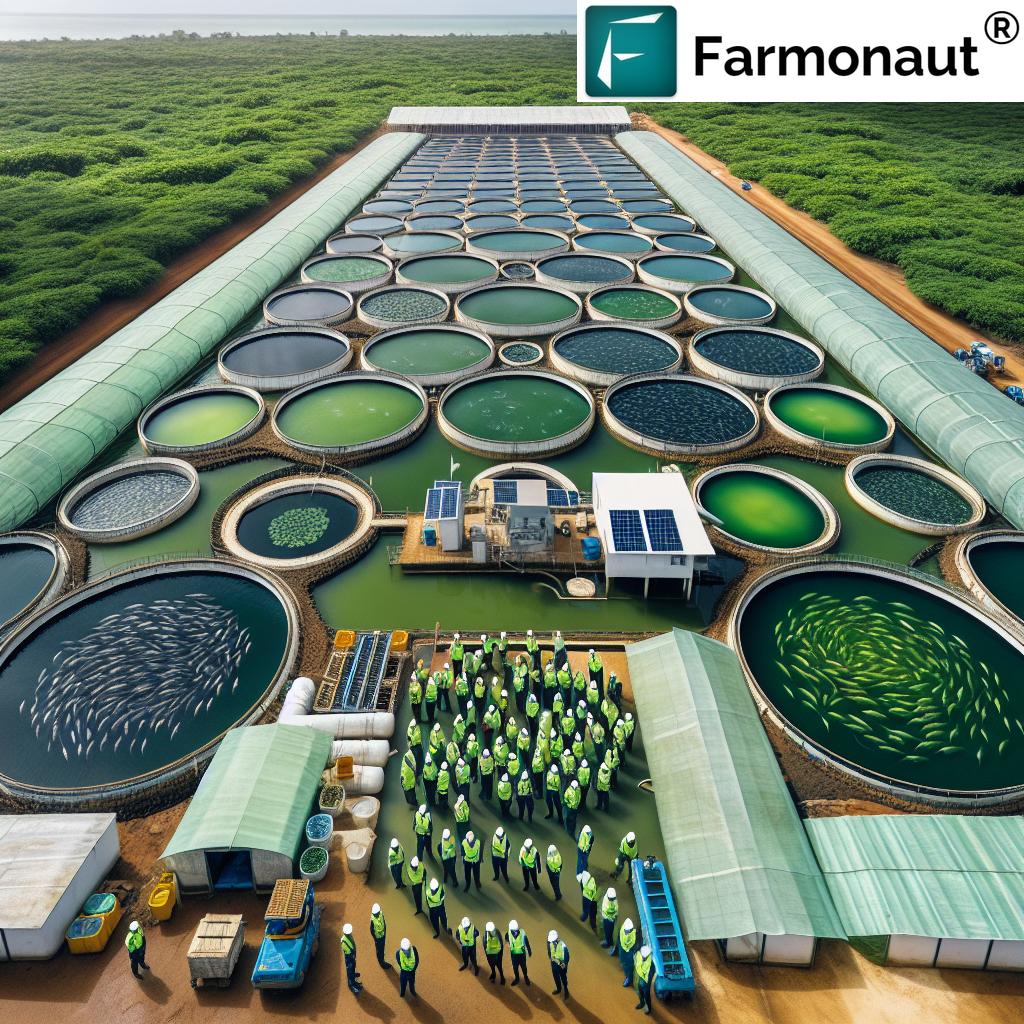
Regulation and the role of policies in sustainable mariculture
The success of mariculture largely depends on the regulatory framework surrounding it. Public policies play a key role in promoting sustainable practices and guiding initiatives towards more environmentally friendly mechanisms.
Firstly, establishing strict standards is essential to ensure that maricultural practices remain sustainable in the long term. This includes, among other things, monitoring water quality, controlling waste emissions, and using species suited to local environments.
Legislative framework and regulatory challenges
Laws and regulations related to mariculture must be able to adapt to global changes, such as climate change or technological advancements. A flexible and adaptable legislative framework can ensure a swift and effective response to new challenges.
Moreover, raising awareness among stakeholders—be they operators, consumers, or decision-makers—is a pillar of the transition towards sustainable mariculture. Initiatives such as Responsible Mariculture work to educate and engage movements towards greater sustainability.
- Adoption of incentive measures for virtuous practices.
- Development of training and awareness programs.
- Implementation of policies that promote technological innovations.
| Issue | Regulation Mechanism |
|---|---|
| Environmental compliance | Water quality standards and waste management |
| Climate adaptability | Flexible and adaptive laws |
| Stakeholder awareness | Educational programs and communication campaigns |
To support these efforts, the platform Sustainable Future for Oceans provides essential resources on appropriate environmental policies for mariculture.
Future perspectives: towards an innovative and integrated mariculture
By 2025, the evolution of mariculture is inextricably linked to continuous innovation. Future perspectives are shaping around integrated models that combine cutting-edge technologies, efficient resource management, and active community participation.
A vision for the future could involve developing integrated marine farms that combine aquaculture, renewable energy, and protection of marine ecosystems. Beyond the ecological advantage, this pooling of resources would enhance the economic resilience of coastal regions.
Integrated models and collective resource management
Integrated systems allow for optimization of both space and available resources. By applying the principles of the circular economy, these models expand the scope of mariculture beyond simple food production.
Finally, to mitigate the impacts of climate and socio-economic variations, a concerted effort is imperative. Consumer involvement in the choice of products sourced from Sustainable Fishing and Ethical Aquaculture is a lever for responsible consumption.
- Integration of renewable energy sources in marine farms.
- Intersectoral collaboration for a holistic mariculture model.
- Formation of public-private partnerships for continuous innovation.
| Strategy | Expected Outcome |
|---|---|
| Integrated marine farms | Resource optimization, economic diversification |
| Circular economy | Waste reduction, optimal resource use |
| Responsible consumption | Support for sustainable and ethical supply chains |
Ultimately, the success of sustainable mariculture depends on our ability to manage the marine environment in an integrated and respectful manner. Visit this in-depth article to learn more about innovative solutions in this promising area.
